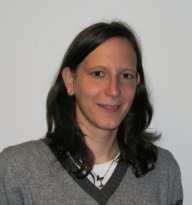Within optical microchips, light finds its way through channels, waveguides, made of silicon. Light from a glass fibre, for example, passes through a structure of optical channels with splitters and couplers. Silicon is the workhorse for this, but it is still passive conduction of light, with some losses as well. To be able to amplify the signal, or even to include a light source on the chip, extra steps are necessary. Other types of semiconductors, like GaAs are an option. But materials doped with the rare earth material Er (erbium) have good amplification properties as well. Until now, no chip existed, on which both silicon and erbium-doped material were integrated. In her thesis, PhD candidate Laura Agazzi of the University of Twente demonstrates a working chip for the first time able to amplify light at signal speeds up to 170 Gbps. The prototype chip has a signal gain of 7.2 dB at 1533 nm. The prototype is a starting point, but the results are promising. One of the possibilities is a laser with an extremely narrow line width of 1.7 kHz. "In any application that needs emission or amplification of light, this integration of both materials is useful. It is not limited to telecom. You could use these chips for sensor purposes, for tracing extremely small particles, for example," Agazzi adds.

Trade-off Agazzi has investigated the optical properties of aluminium oxide doped with erbium, to understand the mechanisms that influence the amplification properties in a negative way. One of these is called ETU (energy-transfer up conversion), which is detrimental for good functionality. "If� you want a large amplification, you would like to put many erbium ions in the material, this in turn can cause a higher ETU. There are possibilities in adapting the host material, causing less interaction of the ions. With my models, I have gained better insight in these and other mechanisms that lower the amplification." Laura Agazzi (1983, Vimercate, Italie) conducted her research within the IOMS (Integrated Optical Microsystems) of prof Markus Pollnau, which is part of the MESA+ Institute for Nanotechnology of the University of Twente and she successfully defended her thesis Spectroscopic Excitation and Quenching Processes in Rare-Earth-Ion-Doped Al2O3 and their Impact on Amplifier and Laser Performance. University of Twente